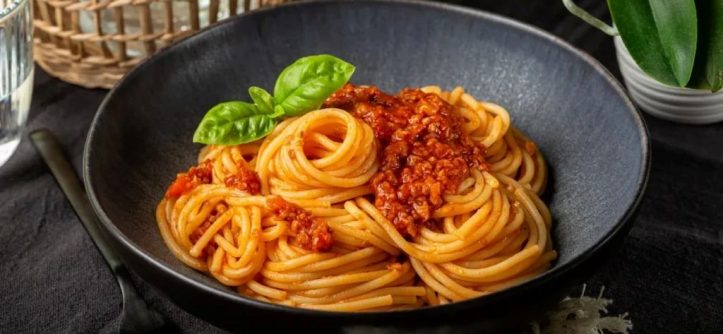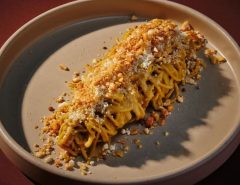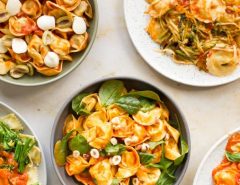Pasta, a beloved dish, has woven itself into the fabric of global cuisines, captivating hearts and plates worldwide. From Italy’s rustic kitchens to bustling Asian street markets, this versatile food transcends borders, uniting cultures through its adaptability and universal appeal. Whether twirled in creamy sauces or tossed in spicy broths, pasta’s charm lies in its ability to blend tradition with innovation. This blog post explores why pasta is a global phenomenon, diving into its rich history, cultural transformations, and enduring popularity. Join us to uncover the fascinating journey of this culinary icon and discover how it continues to inspire diverse culinary creations across the globe.
The Historical Roots of Pasta’s Global Journey
Pasta’s story begins in ancient times, with evidence of its origins dating back to 4th-century BCE Etruria, where early forms of flatbreads resembled modern lasagna. Contrary to popular belief, Marco Polo didn’t introduce pasta to Italy from China; instead, durum wheat noodles were already thriving in Mediterranean diets. By the Middle Ages, Italy’s pasta production flourished, with regions like Sicily perfecting dried varieties for trade. This durability made pasta a staple for explorers, spreading it across Europe and beyond.
Its global ascent accelerated during the Age of Exploration, as Italian merchants carried pasta to new shores. According to a 2018 study by the University of Bologna, pasta exports doubled in the 16th century, laying the groundwork for its worldwide embrace. Today, pasta’s historical adaptability fuels its presence in countless cuisines, from Italian classics to fusion dishes, showcasing its timeless appeal.

Cultural Adaptations: Pasta’s Role in Diverse Cuisines
Pasta’s ability to absorb local flavors has made it a canvas for cultural expression. In Italy, each region boasts unique styles—think Emilia-Romagna’s rich tagliatelle Bolognese or Puglia’s rustic orecchiette with broccoli rabe. Beyond Italy, pasta transforms to suit local palates. In Japan, ramen noodles, a wheat-based pasta cousin, star in umami-packed broths, while in the U.S., macaroni and cheese offers creamy comfort.
This adaptability shines in fusion cuisines. For instance, in Thailand, stir-fried spaghetti with chili and basil blends Italian and Southeast Asian flavors. A 2020 report by the International Pasta Organization notes that 70% of countries have a signature pasta dish, reflecting local ingredients and traditions. My own experience dining at a Peruvian-Italian restaurant, where lomo saltado met fettuccine, revealed pasta’s knack for harmonizing diverse culinary identities, making it a global favorite.
The Universal Appeal of Pasta’s Versatility
Pasta’s charm lies in its simplicity and versatility, appealing to cooks of all skill levels. With just flour and water, anyone can craft fresh noodles, while dried varieties offer convenience without sacrificing flavor. Its affordability and long shelf life make it a pantry staple worldwide. From quick weeknight dinners to elaborate feasts, pasta fits every occasion, budget, and taste.
Moreover, pasta pairs effortlessly with endless ingredients—tomato sauces, creamy cheeses, or spicy oils—allowing cooks to experiment freely. In India, masala pasta blends spices like cumin and turmeric, creating a vibrant dish. This flexibility fosters creativity, as home cooks and chefs alike reinvent classics. I recall tweaking a carbonara with smoked salmon, a twist that delighted my family. Pasta’s ability to evolve ensures its place in kitchens globally, uniting people through shared culinary joy.
Health and Nutrition: Pasta’s Role in Balanced Diets
Pasta often gets a bad rap as a carb-heavy food, but it can be part of a healthy diet. Made from durum wheat, it provides complex carbohydrates for sustained energy. According to a 2017 study by the University of Milan, whole-grain pasta offers fiber, aiding digestion and heart health. Moderation and mindful pairings, like vegetables or lean proteins, enhance its nutritional value.
Cultural twists add health benefits too. In Mediterranean diets, pasta with olive oil and greens aligns with heart-healthy principles. In contrast, creamy sauces in Western dishes can increase calorie counts. To maximize benefits, consider these tips:
- Choose whole-grain options for added fiber and nutrients.
- Pair with vegetables to boost vitamins and minerals.
- Control portions (about 1 cup cooked) to balance meals.
These choices make pasta a nutritious, versatile option across cultures.
Pasta in Modern Culinary Trends and Innovations
Pasta continues to evolve with modern food trends, embracing dietary needs and sustainability. Gluten-free pasta, made from rice or lentils, caters to those with sensitivities, while plant-based sauces align with vegan diets. In 2022, the International Pasta Organization reported a 25% rise in alternative pasta sales globally. Innovations like chickpea pasta add protein, appealing to health-conscious eaters.
Sustainability also shapes pasta’s future. Brands now use regenerative farming for durum wheat, reducing environmental impact. Chefs experiment with hyper-local ingredients, like seaweed-infused noodles in coastal regions. My own attempt at making zucchini noodles sparked a love for vegetable-based pastas, blending flavor and eco-consciousness. These trends ensure pasta remains relevant, adapting to global demands while retaining its cultural significance.

The Social and Emotional Connection to Pasta
Pasta’s global phenomenon status extends beyond taste—it’s a cultural connector. In Italy, Sunday pasta lunches unite families, while in diaspora communities, dishes like spaghetti evoke nostalgia. Its role in celebrations, from weddings to casual gatherings, fosters shared experiences. I remember a potluck where a friend’s homemade lasagna sparked stories of her Italian grandmother, bridging cultures.
Moreover, pasta’s accessibility invites inclusivity. Whether in a Michelin-starred restaurant or a humble home kitchen, it brings people together. Social media amplifies this, with #PastaLove trending globally as foodies share recipes. This emotional bond, paired with its culinary versatility, cements pasta’s place as a universal dish, weaving memories and traditions across borders.
Conclusion
Pasta’s journey from ancient grains to modern plates showcases its unmatched versatility and cultural significance. Its ability to adapt to local flavors, from spicy Asian noodles to creamy Western casseroles, makes it a global phenomenon. Rooted in history yet ever-evolving, pasta unites people through shared meals and creative twists. Related Topics: Ravioli Pasta Recipe: Homemade Delight in Under 60 Min!
Whether you’re savoring a classic marinara or experimenting with bold fusion dishes, pasta invites connection and joy. Share your favorite pasta dish in the comments or spread this article to celebrate its global legacy!
FAQs
Why is pasta so popular worldwide?
Pasta’s affordability, versatility, and ability to adapt to local flavors make it a beloved dish across cultures.
How does pasta vary across different cultures?
Each region adds unique ingredients, like Japan’s ramen or India’s masala pasta, reflecting local tastes.
Is pasta healthy to eat regularly?
In moderation, especially whole-grain varieties paired with vegetables, pasta supports a balanced diet.
What are some modern pasta innovations?
Gluten-free, plant-based, and sustainable options like chickpea or regenerative wheat pasta are trending.
How can I make pasta more exciting at home?
Experiment with global flavors, like adding spices or local ingredients, to create unique dishes.





Leave a Reply